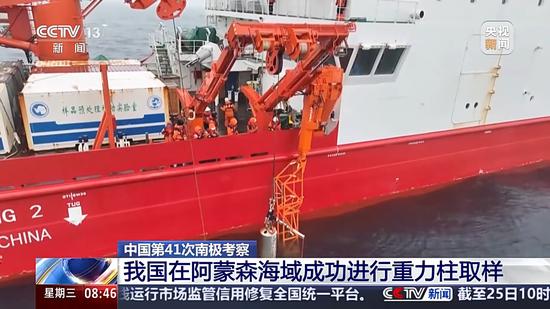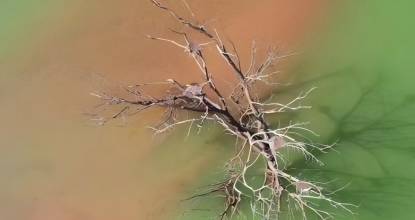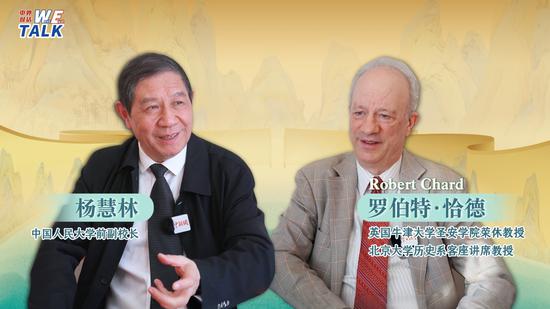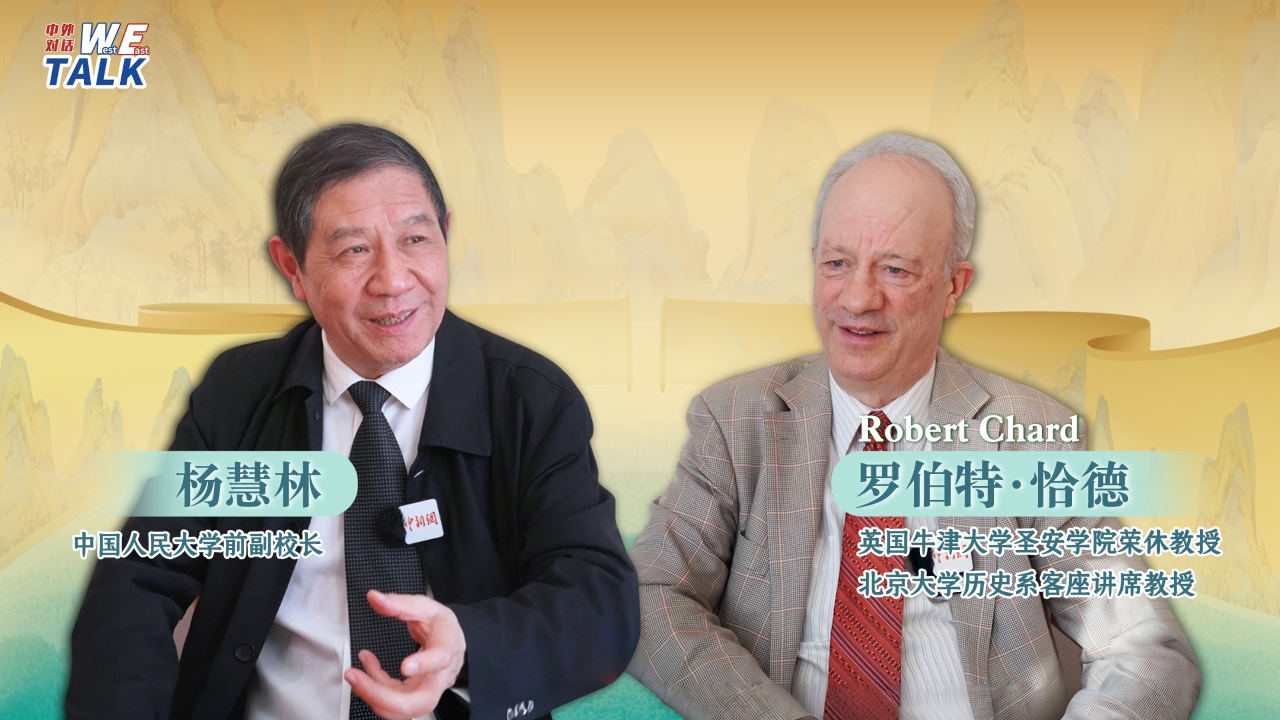
China's 41st Antarctic expedition team conducts gravity core sampling operations using a long piston corer. (Photo/Screenshot from CCTV News)
During its oceanographic survey in the Amundsen Sea, China's 41st Antarctic expedition team successfully utilized a long piston gravity corer to perform gravity core sampling operations, obtaining the longest sediment core to date in the seamount region of the Amundsen Sea, CCTV News reported on Wednesday.
The samplings can be used to reveal the ancient ocean and environmental evolution of the Amundsen Sea. The team also carried out routine investigations in the area, according to the report.
The long piston corer, also known as a gravity corer, uses gravity to collect seabed sediment. It includes a cutting head, core barrel, weights, and trigger mechanism. The corer used in this operation was approximately 22 meters long. The sampling site, located in a canyon of the Amundsen Sea seamount at a depth exceeding 2,800 meters, required over 20 hours from equipment assembly to recovery before the sediment sample was successfully obtained.
Once back in China, the team will analyze the core’s physical, chemical, and micropaleontological features to study the Earth environments at that time and provide insights for predicting future climate change.
China’s 41st Antarctic expedition team set sail on November 1, 2024, for a mission expected to last nearly seven months.


















































 京公网安备 11010202009201号
京公网安备 11010202009201号